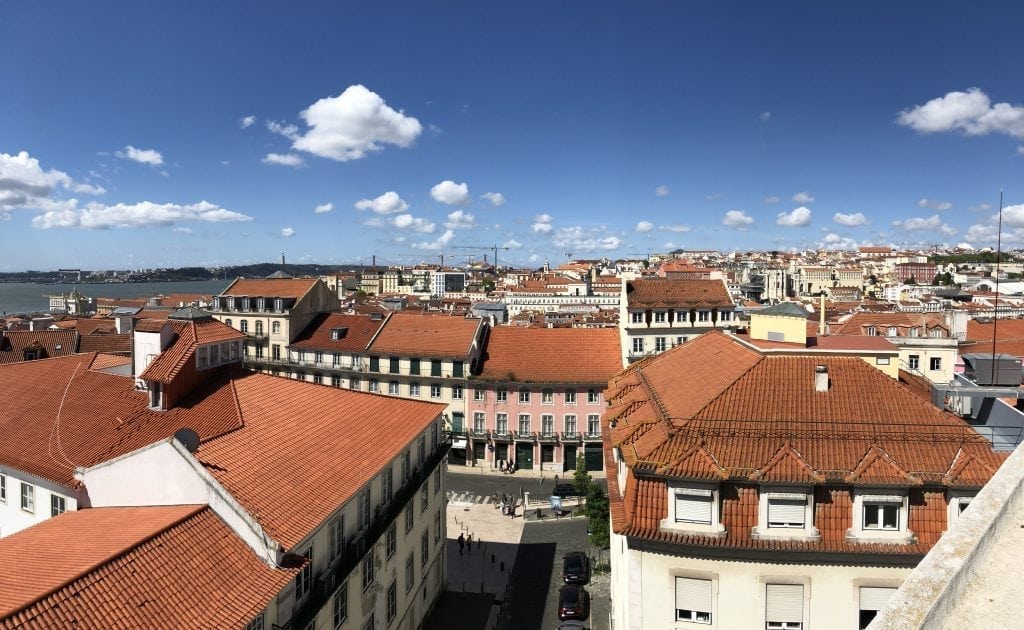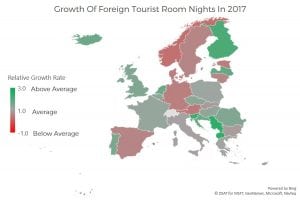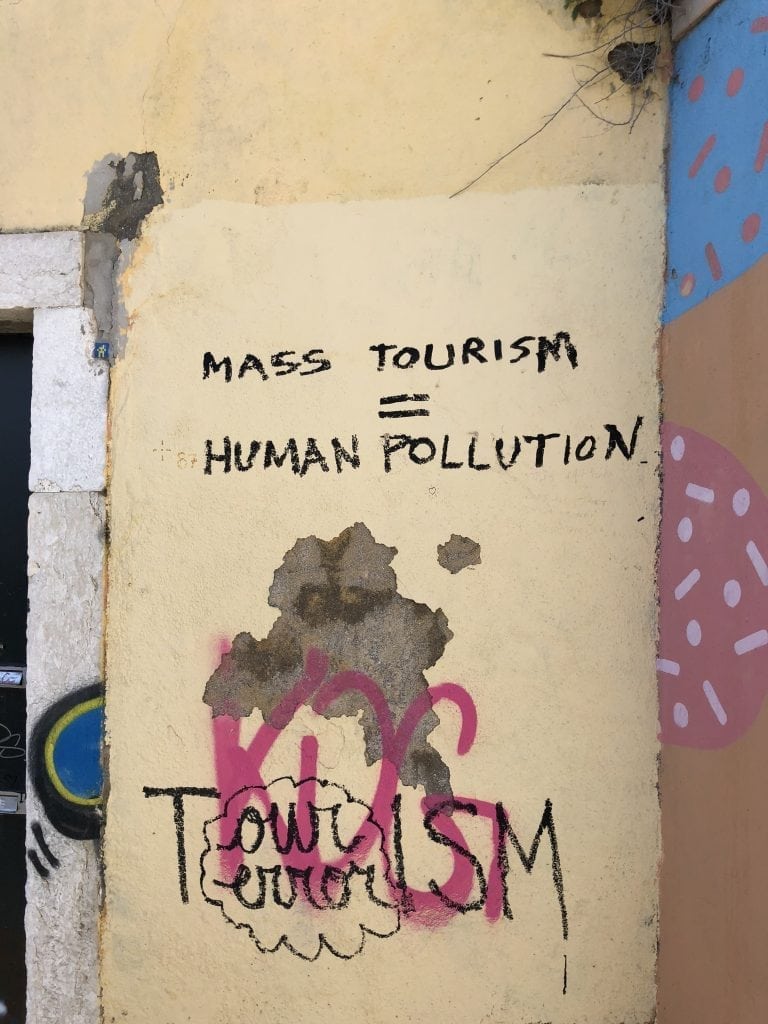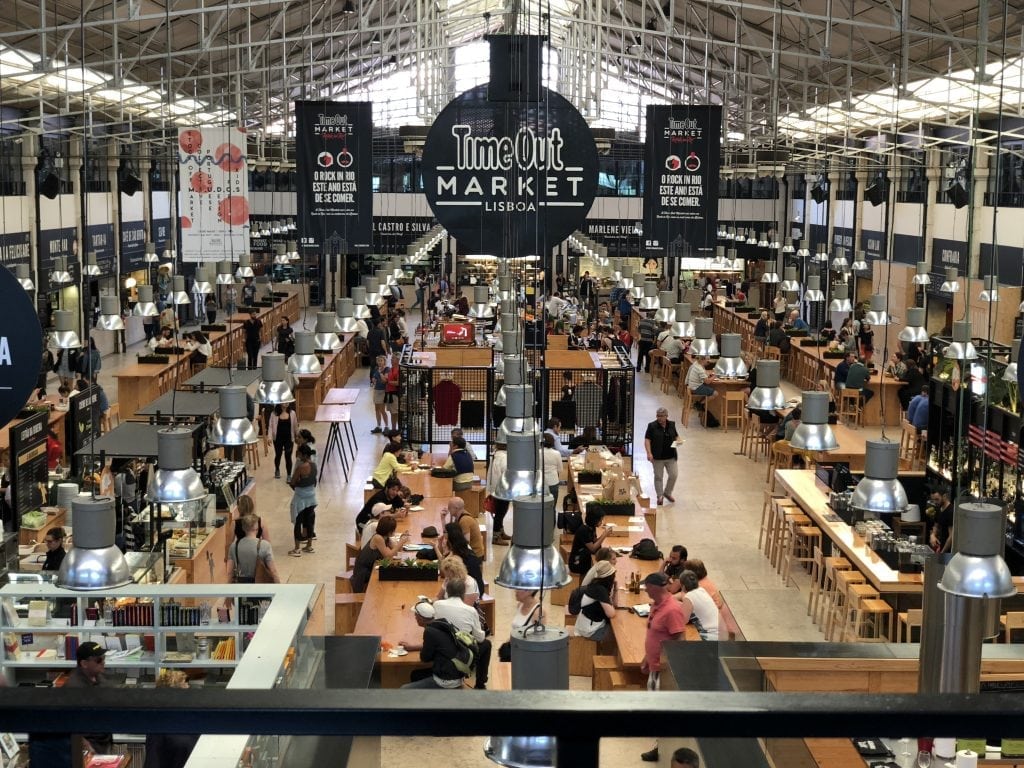Lisbon's Overtourism Lesson: Living Like a Local Is Not Enough
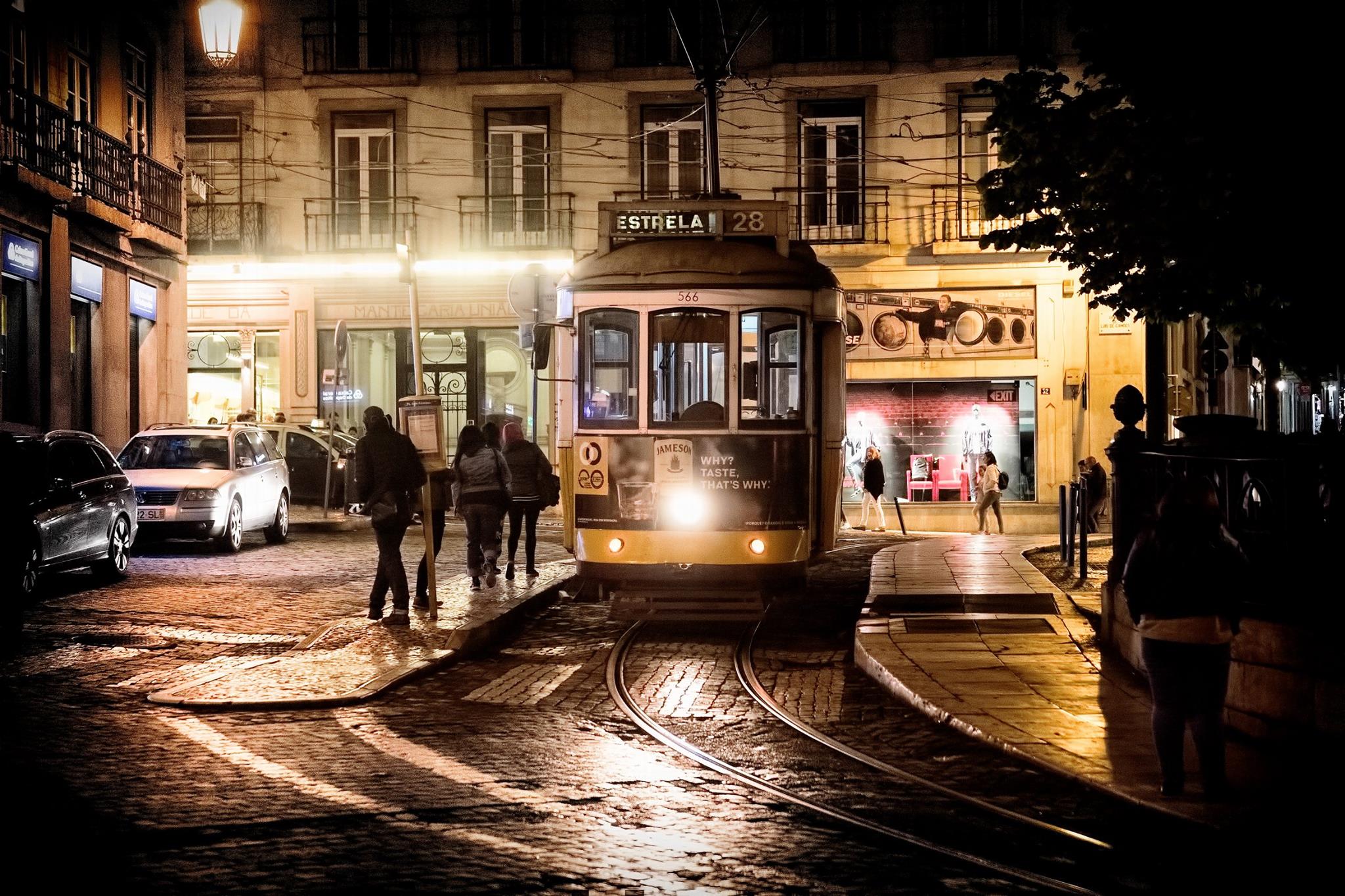
Skift Take
Sometimes I get really uncomfortable as a traveler in new countries.
And I don’t mean overwhelmed by how foreign a place is or how different it is from home.
What I mean is finding out upon arrival that Lisbon has been a case study in overtourism. Legislation encouraging foreign investment, the sharing economy, and a strong start-up scene combined with the city being a comparatively cheap destination has resulted in tons of travelers heading to Lisbon. It doesn’t hurt that Portugal also has lovely, tiled buildings, beautiful beaches, and a vibrant food scene.
Suddenly, my excited “live like a local” mentality falls flat, and I’m reminded that, in some ways, I’m just another annoying tourist.
Am I just another part of the problem when I rent out a home via Airbnb in Lagos, a gorgeous, beach town in the south of Portugal, for the weekend with a bunch of digital nomads? When 10 friends and I show up at a restaurant for dinner, is it frustrating how inadvertently loud we talk in English and then use poor Portuguese to order “salmao grelhado” (grilled salmon) or “bacalhau” (Portugal’s codfish)? When I ride a yellow tram from Belem (a western neighborhood) to the Chiado district in central Lisbon thinking about how much the trams remind me of San Francisco, am I just getting in the way of a local’s ability to use public transportation?
To a certain extent, the answer to all of those questions is simply yes.
Lisbon’s Recent History
Let me catch you up on some recent history in Lisbon. This lovely city previously had very solid rent controls in place that left little incentive for landlords to maintain properties, and high housing sales tax rates discouraged them from wanting to sell. As a result, many of the city’s gorgeous, historical buildings were left relatively dilapidated and run-down.
Enter a global financial crisis that rendered Portugal unable to repay or refinance its government debt, resulting in a $116 billion (€78 billion) bailout program. In 2011, unemployment in Portugal reached over 12 percent. In 2012, rent controls were rolled back considerably as a condition of the bailout program, skyrocketing rental prices. In addition, a “golden visa” program was launched whereby foreigners can invest in Portugal in a variety of ways such as buying real estate properties valued at around $580,000 (€500,000) or more, in exchange for resident permits. The program has driven a total investment of around $4.4 billion (€3.8 billion) as of April 2018, about $3.9 billion (€3.4 billion) of which has been via purchases of property.
Perhaps an unanticipated consequence was a significant tourist boom that has changed the landscape of Portugal, and Lisbon in particular, forever. Annual international arrivals to Portugal went from 4.8 million in 1997 to almost 13 million in 2017. The compounded annual growth rate (“CAGR”) of arrivals over a ten-year period accelerated from 3.5 percent in 2007 to 6.5 percent in 2017.
Source: World Bank
Nights spent in tourist accommodations by foreign tourists were up 10 percent in Portugal in 2017, the eighth highest out of all of Europe and the third highest in Western Europe. In Lisbon alone, there were 4.5 million tourists last year. As a result, there are now nine tourists for every resident in the city. In Porto, there are eight tourists per resident; in Albufeira, in the Algarve, there are 39 tourists per resident. In comparison, the same ratio is about four to one in London and five to one in Barcelona.
Source: Eurostat
The sharing economy has also been increasing considerably. Nights spent in short-term accommodations made up 6.8 percent of total nights spent in tourist accommodation in 2017 in Portugal, which compares to 4.1 percent in 2015 and and 2.1 percent in 2013.
According to data from AirDNA, total available listings on Airbnb in Lisbon numbered close to 12,700 as of March 2018, compared to 7,500 in August 2015, an almost 70 percent increase. In 2017, the average rent per square meter in Lisbon was around $11.20 (€9.62), almost twice that the national average.
Source: AirDNA
The Lasting Ramifications of Overtourism
What can statistics not capture? The people who have to leave homes that have been in their families for generations to move out of the city because they couldn’t afford their apartments’ new rent priced to market. The historic shops and restaurants like the bookstore Aillaud & Lellos that have closed because they cannot afford rent or just aren’t what tourists are looking for. The trams jam-packed to the brim with people like sardines. The slow, then all-of-a-sudden, process of gentrification, making neighborhoods increasingly look like a trendy street corner you could find in almost Anywhere, U.S.A. — complete with English-language menus, eggs benedict with avocado, drawings of cats in hipster glasses, and succulents galore.
The majority of people in the travel industry are now familiar with the problem of overtourism and the value of sustainable tourism. Yes, tourism creates jobs and sustains economies — The World Travel and Tourism Council estimates tourism in Portugal will directly and indirectly contribute 20.5 percent to the country’s GDP and make up almost 25 percent of jobs by 2028. However, it can also add unnecessary “wear and tear” on destinations, negatively impacting the availability of resources, local businesses, and the environment, not to mention residents’ lives.
I sat down with Sandra Henriques Gajjar for a galão (a Portuguese drink similar to a latte) to better understand how Lisbon has changed through her eyes. Henriques Gajjar grew up in the Azores, an archipelago far off the coast of Portugal, but has been living in Lisbon across the river for quite some time. She is the owner and creator of Tripper, a sustainable tourism blog, dedicated to educating travelers and promoting stronger tourism industries. She talked to me about how her writing promotes what she calls “sustainable culture” — sharing stories about the people she meets while traveling, cultural events, traditions, heritage, and history.
And that’s when it hit me. Maybe the focus has been wrong. Maybe the terminology doesn’t capture the issue perfectly. Maybe it shouldn’t be about “sustainable tourism.” Ultimately, people will continue to travel. They’ll continue to value new experiences. And with increasing disposable incomes globally, they are even more likely to seek out opportunities to travel to new destinations. I can guarantee that the one sustainable thing I do in life will be to continue to travel. I will always be a foreigner in a foreign place. A tourist in a tourist destination.
Maybe what it should really be about is “sustainable culture.” How do we sustain cultures without letting tourists overrun them? How do we preserve customs and traditions without them being tainted by foreign investment and the gentrification of cities? How do we offer the opportunity to experience new parts of the world without altering them forever? How do we preserve history for future generations?
The only way to create sustainable cultures is through the collaboration of everyone — governments and regulatory authorities, local businesses and residents, and tourists and digital nomads, alike. And we all have an equal role to play.
Governments: Policy to Support Sustainable Cultures
For governments, it comes down to creating policies that help maintain and preserve sustainable cultures.
In 2016, for instance, the city of Lisbon and Airbnb signed an agreement to promote responsible home sharing and simplify tourist taxes. As a result, Airbnb remitted over approximately $4.4 million (€3.8 million) in tourist tax on behalf of hosts to the city last year, taking the total remittance to almost $7 million (€6 million).
In response to numerous closings of special stores and local businesses, Lisbon launched a program called Lojas Com História, or “Shops with a History,” in February 2015 as a way to preserve and conserve establishments with cultural heritage or significance. In July 2016, 64 businesses, from restaurants to pastry shops, received the label, and 19 additional shops were recognized in March 2017. In so doing, the city of Lisbon can protect, help, and enhance the very aspects of the city’s cultural, historical, and special identity.
The other aspect is, obviously, continuing to work on policies that help the residents that make up the vibrant community that is Lisbon. Henriques Gajjar noted that, “we [as in Portugal] have to grow. Things will [inevitably] be more expensive. The problem is that the income doesn’t follow.”
Average apartment rents can range between $580 and $1,740 (€500 and €1,500) per month in Lisbon. With average monthly salaries after tax around $986 (€850), that’s just simply not enough for residents to be able to afford homes in the city center. Regarding regulations to improve affordable housing, limit evictions for elderly people, and more, “it’s [been] slow, it’s … not as fast as people would want it,” Henriques Gajjar said. “There are things that are starting, but maybe it won’t be the affordable housing that people want.”
Local Businesses: Reinvent, but Show Off Your Culture
When it comes to locals and their businesses, Henriques Gajjar’s approach is different than one might think. “If you want to compete, you have to be different … . You have to adjust, you have to reinvent.”
Gone are the days where businesses can stay open simply because the rent is cheap. A clean, white-walled café with matcha lattes and English-language menus can crush an older, rundown shop next door. What’s the alternative? Businesses must work together, keep their culture inherent throughout, but offer something both locals and visitors can appreciate and enjoy.
A little area known locally as “The Triangle” used to be a bit of a no man’s land. The small neighborhood is really the juncture where three different Lisbon districts back up into each other along three streets — Rua de São Bento, Rua do Poço dos Negros, and Rua Poiais de São Bento — thereby forming a “triangle.”
In “The Triangle,” I met with Cláudia Cordeiro, the owner of Apaixonarte, a small shop carrying the work of local designers and artists. She described to me how this area was relatively sleepy just five years ago, that there was essentially nothing here, but a handful of quiet, somewhat neglected, shops.
Now, this tiny area has become a vibrant collaboration of shops, restaurants, apartments, hotels, cafes, and more as a result of new investment in the area. I don’t mean to say this neighborhood has been shielded from the impact of gentrification. A trendy coworking space for digital nomads (WIP Lisboa, also where I happen to work) sits across the street from a Portuguese travel book store (Palavra de Viajante), a ramen soup spot (Sun Tan), and a French bakery (Baguettes & Cornets).
But what is interesting? Brunch spot Dear Breakfast (owned by Frenchman Julien Garrec who previously lived in New York) offers traditional Portuguese tea that can be bought from the tea shop, Companhia Portugueza do Chá, around the corner. Coffee shop Hello, Kristof offers Nordic interior design but chose to preserve and show off its fabulous Portuguese architecture.
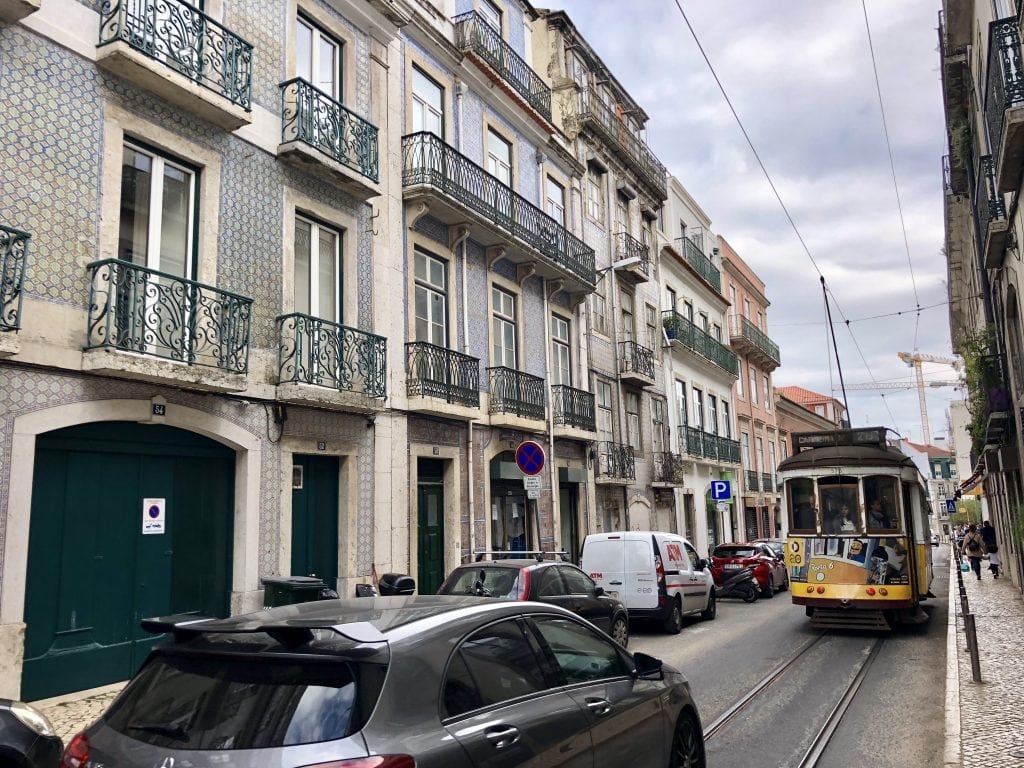
A tram rolls along Rua de São Bento, one corner of “The Triangle,” which offers an amalgamation of authentic shops and fresh new concepts. The author’s coworking space is on the right.
Another example elsewhere in the city is Time Out Market, which looks like a trendy food hall similar to that of Hudson Eats in New York, but features some of Portugal’s Michelin star chefs and other national favorites, such as Manteigaria’s pasteis de nata (Portugal’s famous egg pastry tarts). The space helped bring back to life a previously rundown, rarely used, traditional food market, O Mercado da Ribeira.
The abandoned Monte Palace in São Miguel island (part of the Azores off the coast of Portugal) was recently acquired by a Chinese real estate development company that plans to have a local Portuguese management company operate the property.
What I’m saying is not all foreign investment has to be bad, and not all revitalizations have to destroy the essence of cultures.
What local businesses can create, however, is a collaborative environment that sustains and enhances a unique sense of culture, delicately balances old and new, and offers fresh new concepts betwixt idiosyncratic, historical treasures.
Rather than promoting Tram 28 as a tourist destination, advertise it as public transportation that travelers can take across the city. Rather than sending tourists to massive sardine stores selling tiny cans of fish for $23 (€20), encourage them to try a local restaurant that offers the best sardines in the city. Speak in Portuguese to locals (and travelers who want to give it their best shot!) and offer alternatives in English.
Cordeiro of Apaixonarte told me that, several years ago, the Portuguese didn’t really place value on Portuguese items — they wanted French or Italian goods. Then, as tourists have been flocking to Lisbon seeking out Portuguese products and experiences, a sense of pride has begun to emerge. “Their [the Portuguese's] self-esteem is improving,” she explained. “It’s good to shake things up.” Her shop’s motto? “Proudly Made in Portugal.”
Local businesses may have to adapt and reinvent in order to survive. But they also need to show off and preserve their culture and unique identity to truly succeed. Travelers, not to mention locals as well, want to experience it.
Travelers: Understand Like a Local
As for us travelers?
Maybe the saying should have never been “Live like a local.” Because we never really can live like a local if we’re only there for a short period of time.
Maybe the phrase should have been, “Understand like a local.”
Henriques Gajjar’s website puts it perfectly, “I don’t have the illusion that you can see a destination as it’s supposed to be seen. Even I’ve stepped into many tourist traps in the past, thinking I was experiencing something unique and typical. Travel is an experience. Period. You affect your destination and it affects you."
My fellow digital nomads and I piled into my living room one night to watch You’ll Soon Be Here, a 2016 documentary covering the impact tourism has had on Lisbon’s neighborhood, Mouraria. What we felt after was the discomfort I referenced earlier. How do we grapple with enjoying everything this beautiful city has to offer without feeling like we’re getting in the way?
I’ll tell you how we did it. By asking every local who would talk to us where we should go to eat and then going there, even if there were only four tables in the entire place. By taking short trips to explore cities such as Lagos, Sagres, Sintra, and Porto outside of Lisbon (all the while recognizing they have tourism troubles of their own). By going to a puppet show to celebrate Lisbon’s International Festival of Puppets and Animated Forms. By surfing with locals. By not going on free walking tours or waiting in hour long lines for tourist traps. By taking a ferry across the river to Costa da Caparica to meet with a local fisherman captain and have lunch with a three-generation family still living on Rua Quinze (“15th Street”) with Varina Bike Experiences.
By not only learning about Portuguese history, but learning how the Portuguese feel about their history. By talking to locals, whether it was in a café, an Uber, a bookstore, or on the street. By doing our best to understand what it’s like to be a local.
Maybe it’s time to stop thinking about sustainable tourism, and start thinking about sustainable culture.
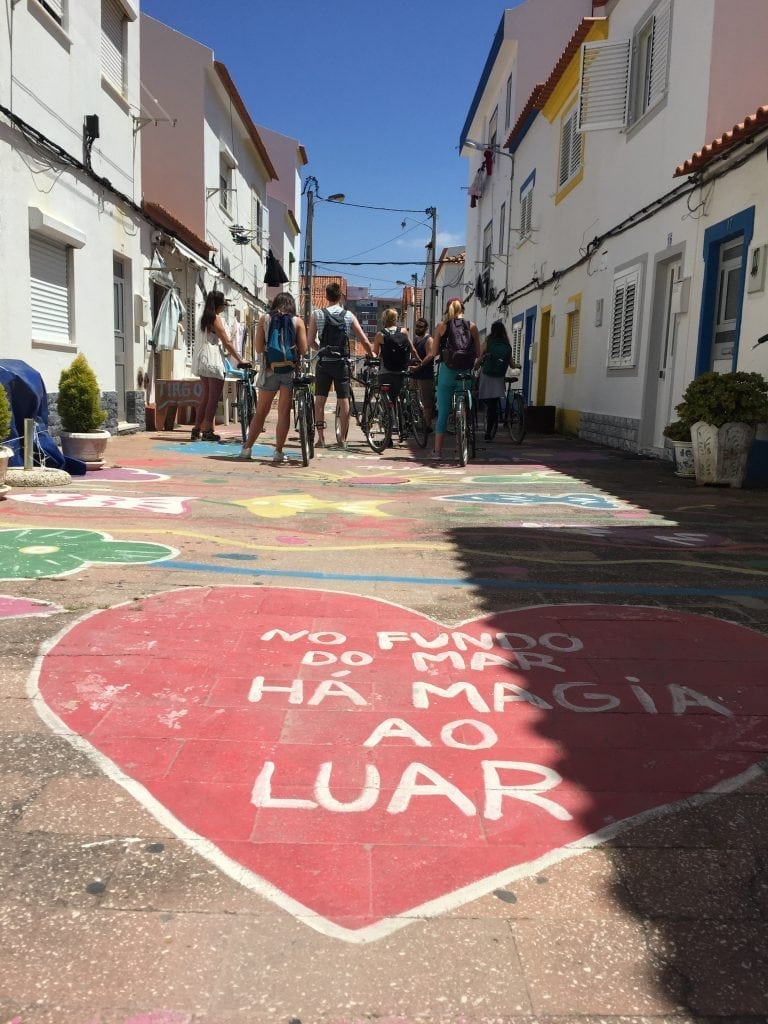
Street art on Rua Quinze in Costa da Caparica, “On the bottom of the sea there is magic in the moonlight.”
Skift’s in-depth reporting on climate issues is made possible through the financial support of Intrepid Travel. This backing allows Skift to bring you high-quality journalism on one of the most important topics facing our planet today. Intrepid is not involved in any decisions made by Skift’s editorial team.
